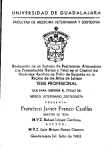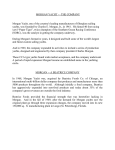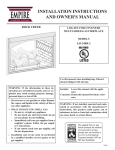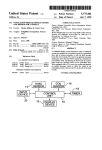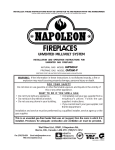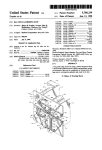Download Advent 300 Troubleshooting guide
Transcript
Owner’s mcmuai Advent Model 300 FM Stereo Receiver Contents W/o shoc baard do nt eXP .thiss 1 Introduction 15 1 Placement 22 2 Loudspeaker connections 22 Phasing 23 4 Source connections Turntable connection Tape deck connection Auxiliary connections Convenience outlet Antenna 6 Operating Controls 8 Notes on operating the Model 300 Volume Bass and treble Output protection fuses Tape recording and playback Circuit breaker 11 FM reception and antennas Muting Multipath distortion Antenna orientation Antenna improvement 13 Using additional equipment with the Model 300 Connecting an additional pair of loudspeakers +18 VDC Using a separate power amplifier Connecting other equipment Troubleshooting guide Warranty In case of diificulty Owner’s record ON OFF POWER Make all connections with Power switch OfL Introduction Placement Thank you for your purchase of the Advent Model 300 FM Stereo Receiver. If you have not already done so, please take a moment to com plete the warranty registration card and mail it (postage will be paid by Advent). The serial number is located on the bottom of the Model 300 as well as on the warranty card. Place the Model 300 on a hard surface, taking care not to obstruct the free flow of air beneath the receiver. Getting the most from your music system will depend on proper hookup of its components and on an understanding of how they operate. If you set up your system in a hurry it may play music, but it is easy to overlook things like proper speaker phasing or turntable grounding that can make a big difference in how good it sounds. Please take an extra few minutes to read this manual carefully as you connect com ponents to the Model 300 and as you familiarize yourself with the receiver’s controls. Doing so will make certain that over the long run your equipment is providing the best performance it can offer. The Model 300 Receiver is compact and rela tively light in weight, permitting placement on a standard 10” deep shelf. These features make it particularly convenient to place the receiver at or near eye level, facilitating operation of the unit. The Model 300 Receiver operates with 110-120 volts AC, 60Hz only. If you have purchased the Model 300/12 for use with 12 volts DC, consult the additional instructions supplied for con necting it to your power source. For use with other voltage and frequency standards, contact Advent. ___ ___ ___ Loudspeaker connections 2 Make all speaker con nections with the Power switch Off. When connecting speaker wires to the speaker terminals, make certain that no wires or splayed wire filaments can short two speaker terminals together, or a speaker terminal to the receiver’s chassis. Do not connect the “hot” (red) speaker terminals directly together. Should any of the above conditions occur while operating the Model 300, damage may result requiring service not covered under the warranty. R 4 L L — .. . A N T E N N A S PEAKE ‘ Connect left and right main speakers to the A terminals. (The left speaker is on your left as you face the speakers.) To hook up additional speakers to the B terminals, please refer to page i . We recommend the use of 18-gauge standard lamp cord for connecting speakers to the receiver. Strip back the insulation about ½” from the end of a speaker’s connecting cord, expos ing the two wire leads. Twist the filaments of each lead to avoid a short circuit in the con nection, and wrap each lead securely around the terminal shafts. Tighten the terminal nuts. Phasing When connecting a pair of speakers it is important that both speakers be connected in the same way. For example, if your speaker ter minals are labelled 0 and 8, and one speaker’s 0 terminal is connected to one receiver channel’s black terminal, the other speaker should be connected identically to the other channel. All speaker cords are coded in some way, such as by ribs running down the insulation of one of the cord’s two wires, to help make the connections identical for each channel. Connecting the speakers identically assures that all the speaker cones move back and forth together, “in phase”. If you are not sure that the connections are correct for proper phasing, a simple listening test willl verify them. Place the speakers face to face a few inches apart, and listen to a musical selection with the Model 300 in the Mono mode. Then reverse the con nections on one speaker and listen again. Whichever connection yields the fuller and lou der sound is the correct one. Source connections CAUTION—TO PREVENT ELECTRIC SHOCK. DO NOT RE MOVE COVER NO USER-SERVICEABLE PARTS INSIDE. REFER SERVICING TO QUALIFIED SERVICE PERSONNEL ADVENT CORPORATION CAMBRIDGE, MASSACHUSETrS 0 PUSH TO RESET SWITCHED 20 SAC AS HZ 00 A W MODEL NO 300 DESIGN CERTIFIED AS COMPLYING WItH P.C C RULES PART 15C IN EFFECT AT DATE OF MANUFACTURE S. N•’ I2OVACNOHZIQOW I •1RVOC ) • / SPEAKERS POWER AMP IN çPREAMOUTi r cc “a: TAPE IN ) TAPE OUT AUX PHONO GNO, Make all source con nections with the Power switch Oil. When making source connections to the Model 300, take care to con sistently hookup left and right channel source outputs and inputs to the corresponding left and right channel jacks of the receiver. rr’i_ — Turntable connection The Phono jacks are for connecting a turntable with a magnetic car tridge. Be sure that the phono plugs are firmly seated and that the connecting cables are posi tioned well away from any AC power cords to prevent hum pickup. If your turntable has a ground wire running from its chassis, connect it to the Ground termi nal screw below the Phono jacks on the rear panel. Tape deck connection For tape playback, con nect the output jacks of the deck to the Tape in jacks of the Model 300. For tape recording, con nect the Tape out jacks of the receiver to the input or record jacks of the tape deck. Auxiliary connections The Aux input jacks may be used for additional high level sources, such as an additional tape deck. When connecting a monophonic source, such as a portable cassette player, use either the Aux-L or Aux-R jack and listen with the Model 300’s Stereo/Mono switch set to Mono so that the sound will play through both speakers of your system. Convenience outlet A switched 120 volt, 60 Hz AC outlet is provided on the rear panel to power other components of up to 100 watts power con sumption. This outlet operates only when the Power switch of the receiver is On. Antenna The Model 300 is equipped with a short-wire whip antenna. When you position the receiver, be sure that the antenna is separated from the power cord and the speaker wires. Otherwise, FM signals can be absorbed before they reach the antenna, and reception will be degraded. For further information, refer to the section on FM reception and antennas on page 11. Power cord Connect the power cord of the Model 300 to a convenient source of AC power, 120 volts, 60Hz; orto your 12 volt DC power source if you have purchased the Model 300 12. Operating controls U 96 “‘ ,G_000 TAPE MONITOR 00 LOUDNESS On MONO STEREO O MUTING Ofl 94 ON 98 100 \\ + 104 / I 92\ SPEAKERS 102 ADVE\T 106 / MODEL 300 90 108 88 AUG TUNED PUONO VOLUME BALANCE BASS TREBLE PHONES POWER Power Turns the receiver On and Off. It is nor Stereo indicator Lights when tuner receives a mal for the Model 300 to make a thumping noise when it is turned On or Off. station broadcasting a stereo signal. Selector Selects program source—Aux, Tuner, Power indicator Lights when receiver is On. The indicator light will glow for a few seconds after the power is switched Off. or Phono for listening or recording. (With tape deck connected to Tape in jacks, select tape playback by switching Tape monitor In.) Tuning knob Rotate the Tuning knob until the desired FM station “pops” into listening range. Rock the dial back and forth until the twin Tun ing indicator lights glow with equal intensity, signaling optimum tuning for minimum noise and distortion. Tape monitor Switch to In for tape playback, or to monitor a tape while it is being recorded with a three head deck. Note: Tape monitor switch must be in Out position for listening to sources other than tape. When no tape deck is oper switching to In will result in no sound. Tuning indicator lights Indicate precise center Volume Adjusts the volume of both channels simultaneously. of a station when tuned for equal brightness. — ating, Balance Adjusts the relative volume of left and Bass and Treble Boost or reduce bass and or right channels for proper stereo balance. Rota tion to the left of the central position reduces right channel output; rotation to the right from the central position reduces left channel output. treble on both channels simultaneously. Loudness In the On position, boosts bass and treble to provide a more pleasing tonal balance when listening at low volume. It compensates for the ear’s relative insensitivity to extreme lows and highs at low volume levels. As Volume is turned up, loudness compensation automati cally decreases. Mono/Stereo Leave in Stereo position for nor mal operation. Use Mono mode when listening to a mono source connected to one channel of the Model 300. Note: Noise and distortion from older records (mono or stereo) and from distant stereo FM stations can be reduced by listening in Mono. Phones Accepts stereo headphones equipped with a standard stereo phone plug. Note: Elec trostatic headphones usually require con nection to the speaker terminals of the receiver. Refer to the user instructions that accompany such phones. Muting When switched On, eliminates inter- station noise when tuning to FM broadcasts. Switch Off when searching for weak signals that the Muting circuit might suppress. Speakers: A and B Turns speaker pairs On and Off. Speaker pairs may be operated individ ually or simultaneously (see page 13). Note: Switching both speaker pairs Off will result in no sound. Notes on operating the Model 300 Volume The relationship between the Volume setting and power output of the Model 300 is not linear. Setting the Volume control at half rota tion does not mean that you are using half the power of which the receiver is capable. For example, if there is no signal input, there will be no power output, no matter what the Volume setting. The Volume control adjusts gain (much like a faucet regulates the flow of water from a pipe), while the level of the signal to be amplified determines power output to achieve a given vol ume level (just as water pressure determines how far the faucet must be opened to allow a given volume of water to pass through). Tithe output level of a tape recorder in your system is significantly below that of the Model 300’s phono preamp, the Volume setting will be higher for tape listening than for disc listening at the same subjective volume level. Power out put, however, will be the same. As you turn up the Volume control of the Model 300, distortion remains constantly low until the point of amplifier overload is reached. The point at which amplifier “clipping” occurs will vary considerably with the dynamic range of the musical material, its bass content, and the set ting of the Bass control. When you exceed the maximum undistorted output into your speaker system, music will start to sound distorted, i.e. harsh, gritty, or fuzzy. While the Model 300 can be operated at or near clipping for sustained periods of time without audible strain or impairment, prolonged oper ation at severely distorted volume levels can damage your loudspeakers. Bass and Treble Bass and Treble controls pro vide carefully tailored adjustment of bass and treble balance relative to the middle register. The Bass control has a sliding inflection point to allow correction of only the lowest bass with a small rotation of the knob, and it affects a wider range of low frequency tones with increasing deflection from the center position. The Treble control has a fixed hinge point, as an overall sloping response provides the most useful adjustment on treble tones. At low-to-moderate volumes, large rotations of the tone controls to boost bass and or treble can replace or augment the operation of the Loudness switch, compensating for the changes Response in dB + 10 +5 0 —10 20 100 1000 00 Frequency in cycles per second in perceived tonal balance ci musical material that occur when listening at lower volume lev els. At louder listening levels, smaller rotations of the controls can effectively adjust for some room effects, the tonal balance of your loudspeakers, or deficiencies in program mate rial. For example, voice broadcasts can some times be made more intelligible by reducing Bass and boosting Treble. When making tone control adjustments, keep in mind that Bass boost logarithmically increases the power demand on the receiver in the region where most musical information occurs. Turning the Bass control from its normal to maximum boost position requires the receiver to feed 10 times as much power into your loudspeakers to reproduce low frequencies, and will cause the Model 300 to overload prematurely. For listen ing at the loudest undistorted volume the Model 300 can provide, set the Bass control for flat response. Output protection fuses The Model 300 is pro tected by fuses inside the unit against abnormal operating conditions, such as a short circuit of the speaker terminals, or a drop in speaker impedance substantially below 4 ohms. Should one or both of these fuses blow, a termination of sound output will occur. If this happens, and you have eliminated other possible causes (see the Troubleshooting guide on page 16), your receiver may require service not covered under the warranty. Tone control curves 20000 Contact your dealer or Advent for service in! or mation. However, should you find it necessary to have the Model 300’s fuses replaced by a serv ice station not authorized by Advent, the follow ing information is important. Make certain that the power supply cord is dis connected before changing fuses. For contin ued protection, replace fuses only with others of the same type and value. Fuses are located in fuse holders on the main circuit board, directly behind the Bass and Treble controls. The fuse at the front of the board (nearest the front panel) is a 3 amp, 250 volt fast blow; the rear fuse is a 4 amp, 250 volt fast blow. Tape recording and playback To play a recorded tape on a deck connected to the Model 300’s Tape in jacks, set the Model 300’s Tape monitor switch to In. The Selector switch may be in any position. (For listening to a tape recording from a deck connected to the Aux inputs, switch Selector to Aux and switch Tape monitor Out.) To record, select a program source with the Selector switch. That program material is auto matically fed from the Model 300’s Tape out jacks to your recorder’s inputs, and is unaf fected by the Model 300’s tone and volume controls. If your tape deck has two heads, like most cas sette decks, you may listen to the source material while recording with the Tape monitor switch In or Out. With the Tape monitor switch In, the source signal passes through the elec tronics of the tape deck and back to the Model 300 before it is recorded. There may be a volume difference between the Tape monitor In and Out. If you are using a three head deck, the Tape monitor switch in the In position allows simulta neous monitoring of the tape as it is being recorded. Switching all speakers Off will not affect the recording process. PUSH TO RESET Circuit breaker When the circuit breaker trips, the receiver will shut off. Should this occur, turn the receiver Off and reset the circuit breaker by pushing the red button. If this does not restore normal operation when the receiver is turned On, or if the circuit breaker trips again, service will be needed. SWITCHED 120 VAC 60 HZ 100 W I2OVAC6OHZI0OW i-18VOC FM reception and antennas OFF ON MUTING Muting As you tune to FM broadcasts with the Muting circuit On, the annoying rushing sounds between stations are suppressed, and listenable broadcasts “pop” into range. Be aware, however, that rapid rotation of the tuning knob may cause you to miss stations, as high perform ance muting circuits are then unable to act fast enough to distinguish them. Therefore, you should tune slowly while searching out stations. transmitter, trees, hills, and buildings can all weaken the signal. An urban location can sometimes result in “multipath” distortion on some or all broadcasts, as FM signals are reflected off large buildings. The reflected sig nals are received “out of step” with the primary broadcast signal, causing audible distortion that is equivalent to the “ghosts” visible in a TV picture. Because of the Model 300’s exceptional sensi tivity and steep “limiting”, weak stations don’t sound weak and noisy. If a station is received at all, it comes in clearly, with little or no back ground noise. However, a slight change in received signal strength can cause a weak sig nal to cut out intermittently, and a very weak sig nal that may be listenable can be suppressed entirely by the muting circuit. While listening to or searching for these stations that may be lis tenable, switch Muting Off, and experiment with antenna orientation to improve signal strength. Antenna orientation Experimentation with orientation of the short-wire whip antenna pro vided can improve reception or allow you to receive additional stations, and should result in satisfactory reception of most stations in most locations. If you are in a very difficult reception area you may find it necessary to regularly change the antenna’s position for particular stations. If antenna orientation does not solve a particular distortion problem, switching a stereo broadcast to the Mono mode may improve its reception. Multipath distortion FM broadcast signals Antenna improvement If consistently bad reception calls for antenna improvement, we suggest the following, which are listed in order of increasing complexity and or expense: travel a line-of-sight path from the transmitter, and a variety of factors that are mostly geo graphical can interfere with FM reception. If your receiver is located some distance from the The first and simplest potential improvement is to replace the short-wire whip antenna with TV “rabbit ears” connected to the two Antenna ter minals of the receiver. Use the simplest and cheapest antenna of this type you can find, because more elaborate versions may actually perform less well on FM signals than the sim plest models. Extend each ear as close to 30 inches as the antenna and space permit, and arrange them as close to horizontal as conven iently possible. Then rotate the entire antenna until the best sound results. As with the whip antenna, different positions for different stations may be required. (We recommend rabbit ears over a flat--wire “folded dipole” antenna because they are easier to manipulate for best results.) If you have an outdoor TV antenna, live in a building with a master TV antenna system, or subscribe to a TV cable service that provides FM signals, connecting the Model 300 to the TV system may result in significant improvement. Making that connection usually requires an assortment of inexpensive accessories, includ ing a TV-FM splitter, appropriate cable, and possibly a matching transformer if the TV system uses 75-ohm coaxial cable, since the antenna terminals on the receiver are for 300 ohms. Your building superintendent or the cable service can usually supply information or the necessary connectors and instructions for connecting them. The ultimate in reception quality, but only if really needed, is a well-designed and properlyinstalled outdoor FM antenna of the directional variety. Depending on your location and the directional character of the particular antenna, an antenna rotor may also be required. Check with your dealer or an antenna specialist for advice on this kind of antenna and its installation. .... .... Using additional equipment with the Model 300 Connecting an additional pair of loudspeakers If you wish to use a second pair of speakers, connect them to the B speaker terminals of the Model 300 as you connected the A speakers to the A terminals. The Speaker On Off switches allow you to listen to either pair individually or both pairs simultaneously. For simultaneous listening, at least one pair of speakers must be of 8 ohms or greater imped ance. Do not listen to two pairs of 4 ohm or lower loudspeakers simultaneously or the internal protective fuses of the Model 300 could blow. If two pairs of loudspeakers are to be played simultaneously in one room, both pairs must be connected identically, in phase with each other. (Please note the discussion of phasing in Loudspeaker connections on page 3.) PUSH TO RESET SWITCHED 120 VAC 60HZ lOS W I20VAC0HZ1O0W +18VDC +18 VDC The single jack marked +18 VDC located next to the power cord carries a low cur rent, non-hazardous DC voltage for powering accessories such as the Advent MPR-1 micro phone preamplifier. To avoid possible con fusion, do not remove its protective cap until you have reason to use the jack. Caution: Make accessory connections to the + 18 VDC jack with the power switch Off. However, should a short circuit of the jack occur while operating the Model 300, a loud hum will drown out sound out put for about 10 seconds, at which point the cir cuit breaker will trip. Turn the Model 300 off, correct the cause of the short circuit (make sure that connecting cable plugs are firmly seated), and reset the circuit breaker. POWER AMP IN 1A 1 OUT 1 R IN TAPE OUT L R Using a separate power amplifier with the Model 300 Because of the very high perform ance of its tuner and preamplifier, the Model 300 is appropriate for use as a tuner preamp with even the most elaborate separate power ampli fiers. Should your system and your power needs expand, you can connect a separate power amplifier as follows: Making sure that the Power switch is Off, remove the wire straps that connect the right and left channel Power Amp in to Preamp out terminals on the rear panel with a pair of pliers. Reserve the wire connectors for possible future use. Then connect the Preamp outputs of the Model 300 to the corresponding right and left channel inputs of the power amplifier. Connect the loud speakers to the separate power amplifier. Troubleshooting guide Connecting other equipment A variety of accessory devices can be connected to the Model 300, such as Do1by system and other noise reduction units, 4-channel decoders, fre quency equalizers, and ambience synthesizers. Such devices connect to the Tape inputs of the Model 300, or may be installed between the Model 300’s preamp and power amplifier by removing the wire straps on the back panel. For detailed instructions for connecting a particular device, consult its user’s manual or its manufacturer. The Troubleshooting guide below is intended to help you resolve quickly some of the problems you may encounter operating the Model 300 Receiver. Using it may also help you to avoid the inconvenience of returning your unit to your dealer or to Advent for unnecessary service. If a problem occurs on one program source only, a component other than the Model 300 may be causing it. For example, if you are experiencing difficulties with a single channel during tape or record playing, try reversing the left and right channel tape or phono connections to the Model 300. If the problem reverses itself and occurs now on the opposite channel, the tape deck, the record player, or one connecting cable is malfunctioning. If you experience a particular difficulty with every program source, chances are that the receiver is at fault. If, after carefully reviewing the corrective meas ures outlined in the Troubleshooting guide, you determine that the Model 300 Receiver needs service, refer to In Case of Difficulty on page 22. Dolby is a trademark of Dolby Laboratories Troubleshooting guide Symptom Possible cause Powerindicator doesn’t light, no sound, power switch is On Possible solutions AC line unplugged. AC line cord plugged into a switched outlet which is not live, Circuit breaker tripped. No sound, Power indicator light is On. Speaker switch(es) Off. Speakers disconnected, either at rear of receiver or at rear of speakers. Tape monitor switch In. Plug in. Switch on power to outlet, or plug line cord into outlet that is always live. With Power switch Off, reset circuit breaker by pushing the red button at left on rear panel. If this does not restore operation when power is switched On, service will be needed. (Referto page 14.) Switch to On position. Connect speaker wires securely. Volume control turned all the way down. Preamp in-Power amp out wire straps disconnected, Switch should be Out unless recording or playing back a tape. Adjust for appropriate volume level. Reconnect, or check connections to external power amp or intermediate device. Symptom No sound, continued Possible cause External program source disconnected. Internal protective fuses blown. Sound from one channel only. One speaker disconnected, either at rear of receiver or at rear of speaker. Balance control set at one extreme Connecting cable for one channel of an external source disconnected. Defective cable connecting external source to Model 300. One channel of external source is dead. Possible solutions Check connections from external source, and reconnect securely. Service required. Return Model 300 to dealer or contact Advent. Connect speaker wire securely. Adjust Balance control Check connections and reconnect securely. Reverse connections to left and right channels both at the inputs of the Model 300 and at the outputs of the external source. If the problem reverses itself, replace connecting cable. Reverse connections to left and right channel inputs of Model 300 only. If the problem reverses itself, the external source is defective. 18 Symptom Possible cause Possible solutions Sound from one channel only, continued Monophonic external source connected to one input jack of Model 300. Wire strap connecting one channel of Preamp in to Power amp out disconnected. Switch to Mono mode. Music sounds harsh or distorted. Amplifier “clipping”. During FM listening, station not correctly tuned. During FM listening, “multipath” interference due to signals reflected off buildings. In Phono mode, dust ball on stylus. In Phono mode, cartridge tracking improperly. Reconnect wire strap, or check connection to external power amp or other intermediate device. Reduce Volume until harshness disappears and or use less Bass boost. Adjust tuning carefully for equal intensity of indicator lights. Change antenna orientation; or switch to Mono mode; or use a more directional antenna. Remove dust and clean record. Refer to turntable and cartridge user instructions for adjusting tracking force. Symptom Radio frequency interference (RFI). Possible cause In Phono mode only, phono cables p.cking up broadcasts from nearby radio transmitter(s). In all modes, speaker cables picking up broadcasts from nearby radio transmitter(s). Poor FM reception. Antenna disconnected. Antenna not positioned for optimum reception and or tangled in other wires. Difficult reception area. Possible solutions Connect ground wire from turntable to Ground screw on Model 300; make a ioop with the phono cables between the turntable and the receiver, and adjust loop size to minimize interference; ground turntable to a cold water pipe; ground turntable to the screw fastening AC outlet cover plate to wall, taking care to twist Ground wire filaments tightly together to avoid possible short circuits. Replace speaker cords with shielded cables, and attach shield to ground screw on Model 300. Reconnect. Reposition antenna. Try a better antenna (refer to FM Reception and Antennas on page 11). 20 Symptom Static during FM reception, due to auto ignitions or to appliances, Possible cause Station not correctly tuned. Weak signal. Antenna located too close to street. Intermittent FM reception. Station too weak for consistent reception with the antenna that is in use. Hum occurs during Phono operation, either drowning out or interfering with sound. Poor Phono cable connection to receiver. Phono connecting cables picking up hum from AC power cords. Possible solutions Adjust tuning carefully for equal intensity of indicator lights. Reorient antenna, or use a better antenna to improve reception (see FM Reception and Antennas on page 1). Move receiver away from street, and experiment with antenna orientation to find the position that picks up the least ignition noise. Change antenna orientation; or listen to the station with Muting Off; or use a better antenna to improve reception; or tune to a station whose signal is stronger. Plug Phono cords firmly into Phono inputs of Model 300. Reverse polarity of the record player’s AC power plug; keep Phono cables away from AC cords and experiment with positioning them to minimize 1,1, Tn Symptom Hum, continued Possible cause Ground wire from turntable to receiver disconnected. Contininuous background buzz interferes with sound during Phono operation Phono connecting cables picking up TV signals. This occurs frequently near TV transmitters. Feedback ioop occurs when the phono cartridge resonates from loudspeaker vibrations which are then reproduced through the speakers. Howling noise, increasing in volume, occurs as Volume or Bass boost is increased in Phono mode. Possible solutions Connect ground wire from turntable to Ground screw on Model 300. Experiment with position of connecting cables to minimize interference. The sub-sonic jilter incorporated in the Model 300 rolls off bass response below 20 Hz, minimizing feedback problems. However, should acoustic feedback occur, increase the distance between the record player and loudspeakers; or improve the isolation of the turntable. Limited warranty In case of difficulty For a period of three years from the date of orig inal purchase, Advent will repair any defect in workmanship or materials that occurs in normal use without charge for parts or labor. If you suspect a defect in your Model 300 Receiver, return it to the dealer from whom it w purchased so that he can verify the complaint and arrange for servicing if necessary. Taking the unit to a dealer first for verification is partic larly important with a receiver because diffi culties with FM reception or with other components in the system can be mistakenly blamed on the Model 300. Excluded from the warranty is damage that occurs as a result of abuse, misuse, or accidents (such as fuses blown as a result of short circuit of the speaker terminals); shipping; and attempts to make repairs or modifications by any person or agency not authorized by Advent. The owner’s responsibilities are to use the receiver according to its written instructions; return the enclosed postpaid warranty registra tion card within 15 days of purchase; provide transportation to the Advent factory or the Advent dealer from whom it was purchased in the event servicing is required; and provide proof of purchase if requested. This warranty is void if the serial numbers have been removed or defaced. 1 2 3 4 5 6 If it is not possible to return your receiver to yoi dealer, please write to the Advent factory, Atttention Customer Relations, and give us: The serial number of your unit; The brands and models of other equipment in your system; The date of purchase and the name of the dealer from whom it was purchased; A specific description of the problem, includin when it does and doesn’t occur; Whether you have retained the original carto and fillers or need new ones; Your return address (please put it on the letter itself), so we can advise you on what action to take. If it is necessary to return the unit to the factor please ship it freight prepaid, using the Owner’s record “Authorized Return” label we will provide you in our response. After the unit has been repaired, it will be returned freight prepaid. For your convenience and protection, we sug gest that you fill in the information indicated below, so that you have an easily accessible record of the purchase of your Model 300 Stereo FM Receiver. Serial number Date purchased Date warranty registration card mailed Dealer Dealer’s sales slip number Advent Corporation 195 Albany Street Cambridge, Massachusetts 02139 (617) 661-9500 Design: Roger Sametz Advent Corporation 195 Albany Street Cambridge, Massachusetts 02139 (617) 661 9500 8K 776 Printed in USA 85-954-048




























